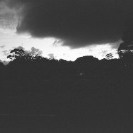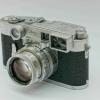New Leica M6 buyers remorse?
-
Recently Browsing 0 members
- No registered users viewing this page.
-
Similar Content
-
- 3 replies
- 254 views
-
- 25 replies
- 1,794 views
-
- 35 replies
- 4,244 views
-
New to Forum 1 2
By Gary Schulz,
- 36 replies
- 801 views
-
- 13 replies
- 888 views
-




Recommended Posts
Join the conversation
You can post now and register later. If you have an account, sign in now to post with your account.
Note: Your post will require moderator approval before it will be visible.